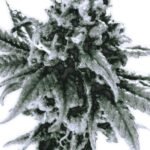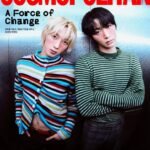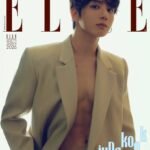An Olive Young beauty store in Seoul
South Korean cosmetics original development and design manufacturers (ODMs) such as Cosmax Inc., Kolmar Korea Co. and Cosmecca Korea Co. are estimated to have posted their highest-ever quarterly profit in the second quarter of this year.
The rise of K-pop and Korean drama series boosted the appetite of budget-tight consumers for K-beauty products amid persistent inflation, driving their sales sharply higher in foreign e-commerce markets such as Amazon.
Revenue at Korean ODMs for cosmetic products are estimated to have climbed 10-40% in the April-June quarter from the year prior, according to market consensus.
Cosmax, South Korea’s biggest cosmetics ODM, will likely report a 26.3% jump on-year to 58.1 billion won ($42 million) in second-quarter operating profit.
Kolmar Korea sees a 15.3% rise to 64.2 billion won in operating profit with a 10.8% rise to 664.3 billion won in sales over the same period, according to analysts.
(Graphics by Dongbeom Yun)
INDIE BRANDS
The second quarter is traditionally the peak season for cosmetics makers thanks to demand for suncare products. The ascent of Korean indie cosmetics brands also attributed to the rapid sales growth for domestic ODMs.
Small and medium-sized indie K-beauty brands such as Cosrxinc, Skin1004, Beauty of Joseon and Round Lab performed well in the US and other countries with trendy and innovative products and creative social media marketing.
“The rise of domestic indie brands and their rapid exports growth were the driving force behind our earnings improvement,” said a Cosmax official.
MARKET DIVERSIFICATION
Their export market diversification beyond China was credited to their strong results in the second quarter as well.
This year, K-beauty products were shipped to more than 170 countries. Their exports leapt to $4.04 billion in the first five months of this year from $3.34 billion in the same period of last year, according to the Korea Customs Service.
A Downtown of Seoul
Analysts remain bullish on Korean cosmetics makers.
“Amazon Prime Day in the third quarter and US Black Friday in the fourth quarter will fuel the growth in orders from cosmetics ODM customers,” said Cho SoJung, an analyst at Kiwoom Securities.
Prime Day is Amazon’s annual event that offers exclusive discount deals on some of top brands. This year’s event took place on July 16-17. Black Friday, a day after Thanksgiving, traditionally marks the beginning of a special deals and discount season for shoppers.
“We will increase the operation rate of our production facilities in North America, including the second one under construction, to the maximum,” said a Kolmar Korea official. “We will aggressively expand our sales network not only in North America but also in Central and South America and Europe.”
Cosmax is considering building a new offshore plant in Latin America to meet burgeoning demand for its beauty products, Choi Kyoung, vice chairman of Cosmax, said early this month.
Riding the K-beauty boom, cosmetics raw material companies are also jostling into the ODM market.
On Monday, Sunjin Beauty Science Co., a domestic cosmetics raw materials supplier, broke ground for a plant to produce suncare products for ODM customers with an investment of 18 billion won, according to its regulatory filing and announcement.
In the second quarter, the National Pension Service has raised its bets on South Korean beauty and food companies on expectations that the ongoing Hallyu, or Korean Wave, will continue to power their export growth.
APR Co., a skincare products maker that debuted on the Kospi in February this year, topped the list of stocks to which the world’s No. 3 pension scheme sharply raised its exposure.
By Sul-Li Jun
sljun@hankyung.com
Yeonhee Kim edited this article















